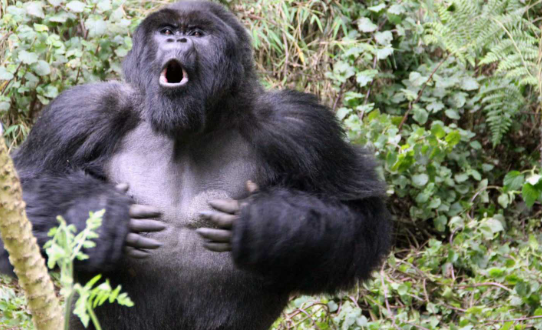Understanding how gorillas display dominance is essential for anyone interested in animal behavior, conservation, or primate studies. These magnificent creatures have complex social structures, and their interactions shed light on power dynamics not just in the wild, but also in understanding the roots of social behaviors in humans. This article will explore key behaviors and signals that gorillas use to establish their social standing within groups.
Physical Display of Power
One of the most striking ways gorillas display dominance is through physical size and strength. Male gorillas, known as silverbacks, are particularly impressive: they can weigh up to 500 pounds and stand over six feet tall. This sheer size often intimidates rivals and asserts authority. When a silverback feels threatened, he may pound his chest or engage in aggressive displays like roaring, but these signals are often just a warning. This physicality not only establishes dominance but also plays a vital role in attracting mates and maintaining group cohesion.
Social Interactions and Grooming
Gorillas also utilize social interactions to communicate their dominance. Grooming serves multiple purposes: it strengthens bonds and establishes hierarchies within the group. A silverback will often be the center of attention, receiving grooming from other members, which indicates their subordination. Conversely, a dominant male will groom others less frequently, reinforcing his social position. These interactions highlight the importance of relationships in gorilla society and show that dominance is not solely about aggression but also about social ties and alliances.
Vocalizations and Communication
Vocalizations play a significant role in how gorillas establish dominance. They communicate through a variety of sounds, such as grunts, roars, and hoots. These vocalizations can convey different messages depending on context and audience. For example, a powerful roar can establish authority, while softer grunts may facilitate social bonding. Understanding these vocal signals offers insight into their emotional state and social hierarchy. The complexity of gorilla communication emphasizes the richness of their social lives and how they navigate relationships in their groups.
Conclusion
Gorillas are fascinating creatures with intricate social structures that rely on a combination of physical presence, social grooming, and vocal communication to establish dominance. Understanding these behaviors not only enriches our appreciation for these animals but also helps inform conservation efforts and human-primate relations. For those interested in learning more about gorillas and their behaviors, consider visiting a local zoo or wildlife sanctuary, or read up on the latest research in primate behavior. Exploring further can deepen our understanding of these incredible animals and their place in the natural world.

